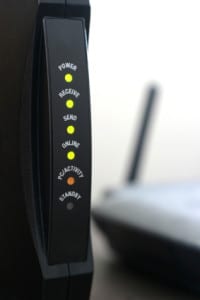On Friday, the firm Allegro Software of Boxborough, Massachusetts, released an odd-sounding statement encouraging all its customers to “maintain firmware for highest level of embedded device security.” Specifically, Allegro wanted to warn customers about the need to apply a software update to address two recently discovered vulnerabilities affecting its Rom Pager embedded web server: CVE-2014-9222 and CVE-2014-9223, collectively known as the “Misfortune Cookie” vulnerabilities. That patch in question was released almost ten years ago – in 2005. As reported widely last week, the vulnerabilities affecting the Rom Pager software can be found in some 12 million broadband routers by manufacturers including Linksys, D-Link, Huawei, TP-Link, ZTE and Edimax. In short: some of the most common sellers of broadband routers in the world. The security firm CheckPoint discovered the vulnerabilities and issued a report about them. (The report web site is here and a PDF format report is here.) According to CheckPoint, the Misfortune Cookie vulnerability has to […]
broadband router
You’re Doing NAT Wrong! One Million SOHO Routers Vulnerable
A vulnerability in more than 1 million small office and home office (or SOHO) routers makes them potentially vulnerable to remote attacks that could expose private internal network traffic to prying eyes, according to a warning posted by the firm Rapid7.
Compromised Website Used In Attack On SoHo Routers
The folks over at the web security shop Sucuri have an interesting post today that warns of a web-based attack launched from the site of a popular Brazilian newspaper that is targeting home broadband routers. According to Sucuri, researchers investigating a breach at the web site politica . estadao . com . br uncovered evidence that the hackers were using iframe attacks to try to change the DNS configuration on the victim’s DSL router, first by trying a brute force attack on the router’s default credentials. According to Sucuri, the payload was trying to crack default accounts like admin, root, gvt and other common usernames and a variety of known-default router passwords. Small office and home office (or SoHo) broadband routers are an increasingly common target for cyber criminals because many (most?) are loosely managed and often deployed with default administrator credentials. [Read Security Ledger coverage of home router hacks here.] In March, the firm Team Cymru published a report describing a widespread compromise of […]


